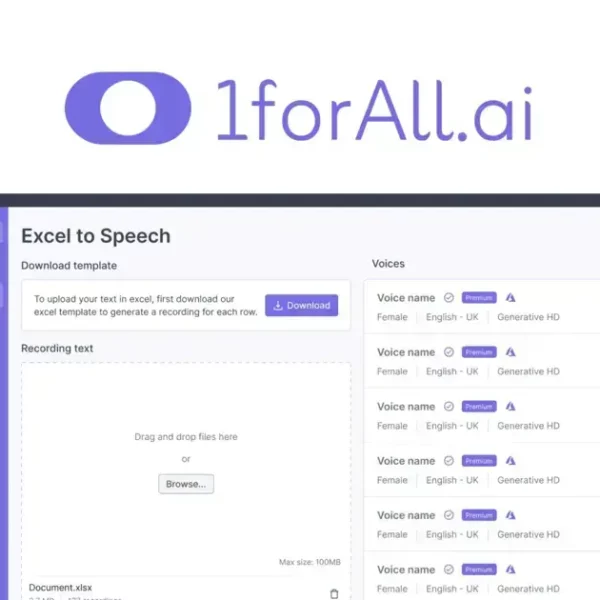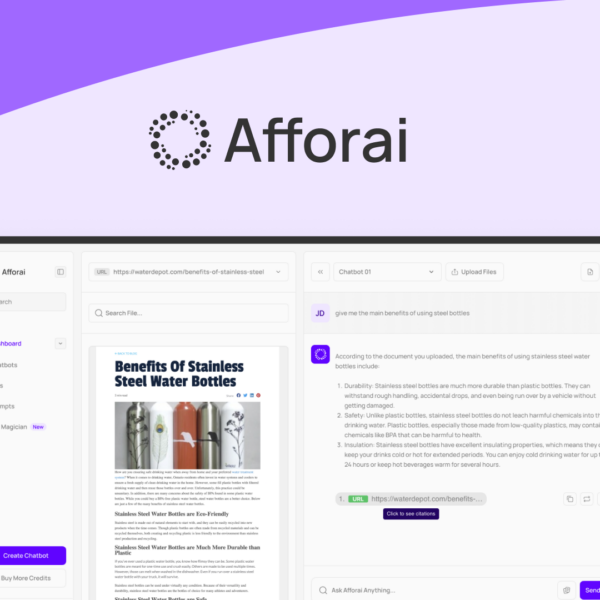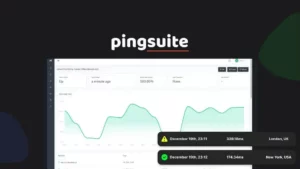Does your startup dream involve the booming world of SaaS? SaaS startups face daunting odds, with many failing before they even gain traction. Let’s delve into the common pitfalls and how you can escape becoming just another statistic in this competitive landscape.
Introduction to SaaS Startup Failures
Many people dream of starting their own Software as a Service (SaaS) company. However, the truth is that most SaaS startups hit a wall. Understanding why these failures happen is key to not becoming just another statistic.
One huge factor is the lack of product-market fit. This means the product doesn’t meet the needs of its target users. Often, founders are too close to their idea to see this clearly.
Another common issue is managing cash flow. Running out of money is a top reason startups close their doors. It’s crucial to keep track of expenses and income to avoid this trap.
Team dynamics can also play a big role. Conflicts among founders or team members can lead to poor decisions and risk losing the focus needed to succeed.
Lastly, listening to customer feedback is vital. Neglecting customer input can lead to missed opportunities for improvement and growth. So, staying connected with users can make a big difference in a startup’s journey.
The Alarmingly High Failure Rate

The failure rate of SaaS startups is shocking. Studies show that about 90% of them don’t make it. This might sound scary, but it highlights a major reality in the industry.
Many factors contribute to this high failure rate. For starters, many startups lack a clear understanding of their customers. Without knowing what users want, it’s tough to create a product they’ll love.
Another reason is the fierce competition. The SaaS market is full of new ideas and products. If your startup isn’t offering something unique, it can be hard to stand out.
Funding issues also play a big role. If a startup runs out of cash, it can’t operate and eventually fails. It’s key for founders to manage their finances well.
Moreover, things change quickly in the tech world. Startups need to adapt and innovate. If they can’t keep up, they fall behind. A good strategy includes being flexible and ready to pivot when needed.
Understanding Product-Market Fit
Understanding product-market fit is key to a successful SaaS startup. It means making a product that truly meets the needs of its target market.
Many startups miss this step. They create products based on their ideas instead of what customers want. This often leads to disappointment.
To achieve product-market fit, do proper research. Talk to potential customers about their needs and pain points. Use surveys or interviews to gather insights.
After gathering information, build a minimum viable product (MVP). An MVP is a simple version of your product with just enough features to attract early users. This helps you test your ideas without spending too much money.
Launch your MVP and ask for feedback. Users will tell you what they like and what can be improved. Use this feedback to make necessary changes.
Keep testing and refining your product until you see strong demand. If customers are excited and willing to pay, you’ve likely found your product-market fit.
Impact of Cash Flow Issues

Cash flow issues can be a major hurdle for SaaS startups. When money comes in slower than it goes out, problems arise fast.
It’s important to keep a close eye on cash flow. Many startups don’t realize they’re running low until it’s too late. This leads to tough choices and can even cause a shutdown.
One common reason for cash flow problems is high expenses. Startups often overspend on marketing or staff before seeing returns. Finding a balance is crucial.
Revenue timing also matters. Many SaaS businesses rely on subscriptions. If customers delay payments, cash flow can suffer quickly. Making sure to have a solid billing process helps.
To manage cash flow, create a budget. This should outline all expected costs and revenues each month. Regularly updating this budget keeps you aware of your financial health.
Consider seeking funding or loans if things get tight. Additional financial support can help bridge gaps until revenue increases. Just be sure to choose options that won’t hurt your long-term growth.
Strategies for a Strong Go-to-Market Approach
A strong go-to-market strategy is crucial for SaaS startups. It helps you reach customers and grow effectively. To build this plan, consider a few key steps.
First, define your target audience clearly. Know who your ideal customers are. Understanding their needs will help shape your messaging and product features.
Next, conduct thorough market research. This means looking at competitors and understanding market trends. Identify what makes your product unique. Highlight these strengths to stand out.
Develop a clear value proposition. This tells potential customers why they should choose you over others. Make it simple and focused on benefits.
Then, choose the right marketing channels. Whether through social media, email, or content marketing, find where your audience spends time. Tailor your approach for each channel to maximize impact.
Don’t forget about customer relationships. Building trust is vital. Engage with customers regularly and ask for feedback. This shows you care and helps improve your product.
Finally, track your results. Use analytics to measure the success of your strategy. Be ready to adapt based on what’s working and what’s not. Continuous improvement is key to growth.
Addressing Customer Churn Effectively

Customer churn is a big challenge for SaaS businesses. Addressing it effectively can help you keep more clients and grow your company. Start by understanding why customers leave.
First, gather feedback from customers who choose to cancel. Use surveys or direct conversations to learn their reasons. Common issues include pricing, service quality, or lack of necessary features.
Next, improve your onboarding process. Many customers churn because they don’t understand how to use the product. Provide clear guides, tutorials, and support during their trial period.
Regularly engage with your current customers. Check in through emails or calls to make sure they’re happy. These personal touches can build loyalty and help you spot issues early.
Consider offering incentives to keep customers. Discounts, free upgrades, or personalized services can encourage them to stay. Make them feel valued.
Lastly, track your churn rate regularly. This helps you identify trends and adjust your strategies. If churn is high, take quick action to resolve underlying problems.
Conflict Among Founders and Team Dynamics
Conflict among founders can seriously impact a SaaS startup’s success. It’s vital to address these issues early and effectively. Often, disagreements arise from differing visions or work styles.
Open communication is essential. Founders should schedule regular check-ins to discuss their goals and concerns. This helps keep everyone on the same page and reduces misunderstandings.
Set clear roles and responsibilities. When everyone knows their tasks, it’s easier to avoid friction. Define who handles what to prevent overlap and confusion.
Promote a collaborative culture. Encourage teamwork and value everyone’s input. Regular team-building activities can strengthen relationships and create a more supportive environment.
When conflicts do arise, tackle them head-on. Avoid letting issues fester. Use conflict resolution techniques like mediation or facilitated discussions to find common ground.
Lastly, seek outside help if needed. Hiring a coach or consultant can provide a fresh perspective. They can offer tools and strategies to improve team dynamics.
Successful SaaS Case Studies

Successful SaaS case studies offer valuable lessons and inspiration for new startups. They show what works and can guide your own strategy. Let’s look at some key examples.
First up is Dropbox. This cloud storage service grew rapidly by offering free storage to new users. Their referral program encouraged sharing, which helped them expand quickly.
Next, consider Slack. This messaging platform became popular by enhancing team communication. They focused on creating an easy-to-use interface. By solving a common workplace problem, Slack gained a massive user base.
Zoom is another great example. During the pandemic, they quickly became the go-to video conferencing tool. They adapted to high demand by adding features and improving security, making users feel safe and supported.
Finally, look at HubSpot. They provide marketing, sales, and service software. Their focus on inbound marketing helped businesses attract customers. HubSpot offers free tools that draw in leads, and then they convert them to paying customers.
These case studies show that understanding user needs and delivering real value can drive success. Learning from these examples can help you navigate your own SaaS journey better.
Key Takeaways from SaaS Failures
Learning from SaaS failures is crucial for new startups. By understanding what went wrong, you can avoid making the same mistakes. Here are some key takeaways.
First, ensure that you have a strong product-market fit. Many startups fail because they build products that no one wants. Talk to your customers and understand their needs.
Next, focus on managing your cash flow. Running out of funds is a common reason startups close. Keep a close eye on expenses and income to avoid surprises.
Another important point is team dynamics. Conflicts among founders can lead to issues down the road. Establish clear roles and communicate openly to keep the team on track.
Don’t overlook the importance of a solid marketing strategy. A great product won’t succeed without effective marketing. Test different channels to find what works best for your audience.
Lastly, be ready to adapt. The tech landscape changes quickly. If something isn’t working, don’t be afraid to pivot your approach. Flexibility can be the key to long-term success.
How to Validate Your Product Idea

Validating your product idea is an important step for any SaaS startup. It helps you understand if there’s demand before you invest too much time or money.
Start by doing some research. Talk to potential customers and ask about their needs. Use surveys or interviews to gather useful insights.
Next, build a minimum viable product (MVP). This is a simple version of your product with essential features. An MVP allows you to test your idea without a big commitment.
Once your MVP is ready, share it with a small group of users. Ask for their feedback. This will help you see what works and what needs improvement.
Monitor user behavior closely. Look for patterns in how they use your product. Are they finding value? If not, you might need to rethink your approach.
Finally, be open to change. If the feedback isn’t positive, don’t be afraid to adjust your product. Validating your idea is an ongoing process. Use what you learn to refine your offer and better meet customer needs.
Managing Finances in a SaaS Business
Managing finances in a SaaS business is crucial for success. Without clear financial planning, a startup can quickly run into trouble.
Start by creating a budget. This should include all expected income and expenses. Regularly review this budget to track your financial health.
Focus on predicting cash flow. Understand when money comes in and goes out. This helps prevent cash shortages. You can use tools like spreadsheets or budgeting software for better tracking.
Keep an eye on your customer acquisition costs. This tells you how much you spend to gain a new customer. Make sure it’s not too high, or it could eat into profits.
Monitor key metrics regularly. Important ones include monthly recurring revenue (MRR) and customer lifetime value (CLV). These numbers provide insights into your growth and profitability.
Don’t forget about taxes. Set aside money to cover them throughout the year. This way, you won’t face surprises when tax season arrives.
Finally, consider seeking professional advice. A financial advisor can help you make informed decisions and optimize your financial strategy.
Creating an Effective Market Entry Plan

Creating an effective market entry plan is crucial for SaaS startups. This plan helps you launch your product successfully and reach your target audience.
Start by understanding your target market. Who are your ideal customers? Research their needs, preferences, and behaviors. Use surveys or interviews to gather insights.
Next, analyze your competition. Identify similar products and their strengths and weaknesses. This will help you find gaps in the market and opportunities for your product.
Develop a clear value proposition. This tells customers why they should choose your product over others. Make it simple and focused on the benefits.
Choose the right channels to reach your audience. Whether it’s social media, email marketing, or content marketing, select methods that work best for your target customers.
Create a timeline for your launch. Include key milestones and deadlines. This keeps your team on track and ensures everyone knows their role.
Finally, measure success after your launch. Use analytics to track performance and gather customer feedback. This helps you understand what works and what needs improvement.
Improving Customer Retention Strategies
Improving customer retention is vital for the success of any SaaS business. It costs less to keep existing customers than to gain new ones.
Start by understanding your customers’ needs. Regularly ask for feedback through surveys or direct conversations. This shows you value their opinions and helps you improve.
Provide excellent customer support. Quick responses to inquiries can make a big difference. Make sure your support team is easily reachable and helpful.
Engage your customers with regular updates. Share new features, tips, or resources through newsletters or emails. Keeping them informed fosters loyalty.
Implement a loyalty program. Offering discounts or rewards for continued use can encourage customers to stay. It makes them feel valued and appreciated.
Use data to track customer behavior. Pay attention to trends and identify at-risk customers. If someone hasn’t logged in for a while, reach out to check in. Proactive measures can prevent churn.
Lastly, continuously improve your product. Regular updates based on user feedback can keep your offering fresh. Satisfied customers are more likely to stick around.
Building a Cohesive Team Culture

Building a cohesive team culture is essential for your SaaS startup. A strong team can drive success and improve productivity. Start by promoting open communication across all levels.
Encourage team members to share their ideas and feedback. This creates trust and a sense of belonging. Regular team meetings can help keep everyone informed and engaged.
Foster collaboration by working on projects together. Use tools that enable teamwork, such as project management software. Working side by side helps to build relationships and understanding among team members.
Celebrate achievements, both big and small. Recognizing individual and team contributions boosts morale. It shows that you value everyone’s efforts.
Provide opportunities for professional development. Offer training sessions or workshops. Helping your team grow encourages loyalty and satisfaction.
Promote a positive work-life balance. Encourage breaks and time off to recharge. A happy team is more likely to be productive and creative.
Finally, lead by example. Demonstrate the values you want to see in your team. A positive attitude and strong work ethic can inspire your team to do their best.
Leveraging AI for SaaS Growth
Leveraging AI for SaaS growth can significantly enhance your business’s success. AI offers tools that save time and improve service. Start by identifying areas where AI can help.
One way AI can boost growth is through personalization. By analyzing user data, AI can help tailor experiences for individual customers. This makes your product more appealing and increases user engagement.
AI can also automate customer support. Chatbots can answer common questions quickly. This frees up your team to focus on more complex inquiries, improving overall efficiency.
Additionally, AI can enhance marketing efforts. Machine learning algorithms can analyze trends and predict customer behavior. This helps you create targeted campaigns that yield better results.
Using AI for data analytics is another great strategy. It can provide insights into user activity, allowing you to make informed decisions. Understanding what features users love can drive product improvements.
Finally, don’t forget about continuous learning. As technology evolves, so should your AI tools. Stay updated on trends and be ready to adapt for long-term success.
Essential SaaS Metrics to Monitor

Monitoring essential SaaS metrics is key to your business’s success. These metrics help you understand your performance and make informed decisions. Start with Monthly Recurring Revenue (MRR). This shows the total income you can expect every month.
Another important metric is Customer Churn Rate. This tells you how many customers you lose over time. A high churn rate means you need to improve customer retention strategies.
Next, track Customer Lifetime Value (CLV). This helps you understand how much each customer is worth over their entire relationship with your business. Knowing CLV helps you budget for marketing and sales costs.
Customer Acquisition Cost (CAC) is also vital. This shows how much you spend to gain a new customer. Keeping CAC low while improving CLV is important for profitability.
Finally, look at Active Users. Whether you measure daily or monthly active users, this metric shows how many customers regularly engage with your product. Increasing active users is crucial for growth.
By keeping an eye on these key metrics, you can make better decisions and improve your SaaS business.
Navigating and Surviving Challenges
Navigating and surviving challenges is part of running a SaaS business. Every startup faces hurdles, but how you handle them can lead to success.
First, identify common challenges like cash flow issues. Keep track of your income and expenses. A solid financial plan helps you avoid running out of money.
Technology changes fast, so stay updated. Regularly update your software and systems. This keeps your product competitive and ensures customer satisfaction.
Another challenge is acquiring new customers. Use effective marketing strategies to reach your target audience. Social media, content marketing, and email campaigns can help.
Focus on customer retention as well. Offer excellent customer support, listen to feedback, and make improvements. Happy customers are more likely to stick around and refer others.
Additionally, build a strong team culture. Encourage open communication and collaboration. A united team can overcome challenges together and stay motivated.
Lastly, be flexible and ready to adapt. If something isn’t working, be willing to pivot your strategy. Learning from setbacks is key to long-term success.




